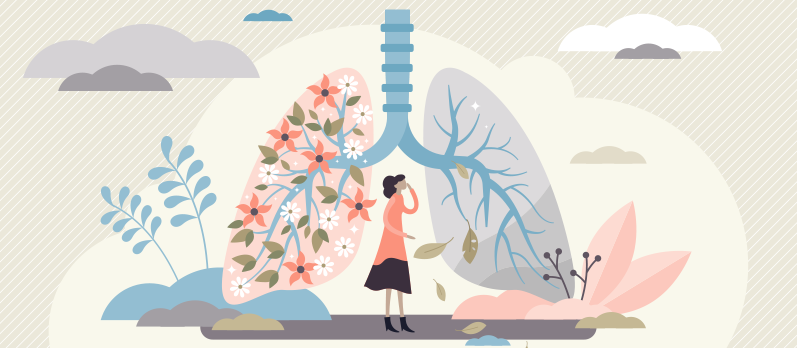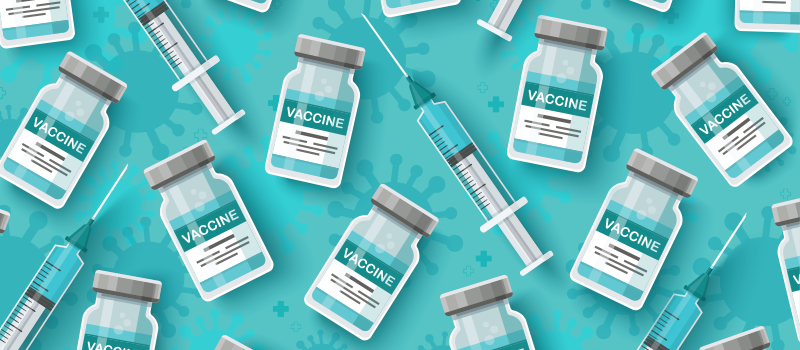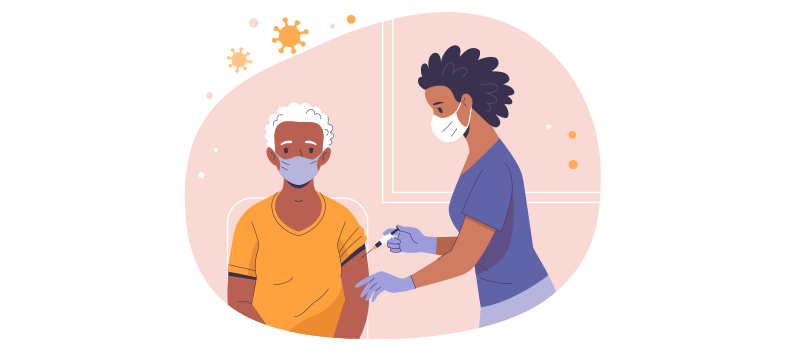What’s the Buzz
The Bee Healthy Blog
How to Tell the Difference Between RSV and COVID-19

COVID-19 is an infectious disease caused by a new coronavirus called the SARS-CoV-2. Most people infected by this virus experience a mild to moderate respiratory illness, but some become seriously ill and need medical attention. The symptoms of COVID-19 can be very similar to other respiratory infections, such as respiratory syncytial virus (RSV).
Please continue reading to learn more about the difference between COVID-19, RSV, and acute bronchitis. We will also briefly answer some frequently asked questions about how COVID spreads when symptoms appear, and whether reinfections are possible.
When do COVID-19 symptoms start appearing?
The symptoms of infectious diseases like COVID-19 do not appear immediately after exposure to the virus. It can take anywhere from 1 to 14 days to develop symptoms. On average, symptoms begin 5-6 days after a person is exposed. That’s why it is advised you isolate yourself away from others for 14 days if you have been exposed to the SARS-CoV-2 virus. This is important to prevent the spread of the virus, especially in places where testing is not widely available.
Is it possible to be reinfected with COVID-19? Will it be a severe illness?
While some cases of COVID-19 reinfection have been reported, they are rare. A person can get infected, fall sick, recover, and become infected again with the SARS-CoV-2 virus. It is not possible to predict whether a subsequent infection will be less or more severe. In general, people with underlying lung disease or other health problems are at high risk of complications.
Vaccines reduce the risk of contracting the virus, including the Delta variant. Vaccines are also highly effective in preventing hospitalization and death. Fully vaccinated people with breakthrough infections appear to be infectious for a shorter period and have milder disease.
Can young children spread COVID-19 to others if they don’t have symptoms?
Children, including young children, can be infected with the SARS-CoV-2 virus that causes COVID-19. Many children do not develop any symptoms. Those who get sick tend to have milder symptoms, similar to the common cold or flu, such as low-grade fever, cough, and tiredness. However, some children can develop severe complications such as difficulty breathing. The risk of severe illness is higher in children with underlying health conditions.
Children can spread the COVID infection to parents and others in the home. A study published in JAMA Pediatrics found that while teenagers (14-17-year-olds) are more likely to bring the virus into the home, younger children (up to age 3) are more likely to spread it to others in the household.
What is the difference between COVID-19 and acute bronchitis?
The early symptoms of COVID-19 are fever, cough, sore throat, shortness of breath, fatigue, and body ache. Other symptoms can include headache, runny nose, nausea, vomiting, diarrhea, loss of taste or smell, pinkeye, and skin rash. These symptoms can be present with other respiratory infections too. Therefore, it is not possible to tell what you have based on symptoms alone.
Bronchitis is a general term that indicates an inflammation of the respiratory tract. Specifically, it is an inflammation of the tubes that carry air into and out of the lungs. It is caused by some of the same viruses that cause common colds and flu. Acute bronchitis is a condition that comes on suddenly and does not last long. It is sometimes called a chest cold. Bronchitis (inflammation of the lung passages) can be present in people with COVID-19.
What’s the difference between COVID-19 and respiratory syncytial virus RSV?
Respiratory syncytial virus (RSV) is a respiratory illness that can cause similar symptoms to COVID-19. Most kids are infected with RSV by age 2. Both RSV and COVID spread in the same way. When an infected person coughs or sneezes, they send droplets containing the virus into the air. Other people can get sick if they inhale these droplets or touch surfaces on which they have fallen and then transfer the virus to their respiratory tract by touching their eyes, nose, or mouth.
So far, it appears that adults are at the greatest danger from the coronavirus that causes COVID-19. Infants and young kids, on the other hand, are at the highest risk from RSV. RSV can also be risky in older adults (age 65+) who have health problems such as diabetes, heart disease, and lung disease. Nonetheless, both COVID-19 and RSV infections can occur in people of all ages.
In most cases, RSV causes mild symptoms in older children and adults. Respiratory illnesses like RSV infection tend to cause mild cold-like symptoms (fever, cough, runny nose). However, RSV can also cause appetite loss, breathing difficulty, sneezing, and crankiness in young children. Serious complications of RSV can include pneumonia (lung infection) and bronchiolitis (inflammation of the air sacs in the lungs).
RSV symptoms are more likely to be severe in premature infants, children younger than 6 months old, and children with lung or heart disease, weak immune systems, or swallowing problems.
Can you get RSV and COVID-19 together?
In June 2021, the Centers for Disease Control and Prevention (CDC) issued a health advisory about the rising number of RSV cases in the southern United States. The recommendation was for health care providers to test people of any age for RSV if they have signs and symptoms of respiratory illness and test negative for COVID-19.
RSV infections in the summer are unusual (they typically occur in the fall and winter). The rise in RSV cases could partly be due to the relaxation in coronavirus prevention steps such as masking and social distancing. It could also be that preventive measures during the pandemic have lead to reduced exposure to RSV, and therefore, less immune protection. Mothers normally pass on immunity to babies during pregnancy. Some scientists believe that this immune response may have been compromised during the pandemic because new mothers are not exposed to as many respiratory viruses.
This is of concern because, as of September 2021, no COVID vaccine is approved for use in children under 12. Doctors are seeing kids with more than one respiratory infection, for example, RSV and coronavirus. This can cause serious symptoms, require hospitalization, and be more challenging to treat. Also, if the new coronavirus and other viruses were to surge simultaneously, it could put serious stress on hospitals and healthcare systems in the country. How to stay healthy and prevent COVID-19 and RSV?
The best thing you can do to protect yourself and your loved ones is to get vaccinated against COVID-19. You should also talk to your doctor about getting the seasonal flu vaccine. Continue preventive measures like washing your hands regularly, practicing social distancing, and wearing a mask indoors or in crowded areas. This will help protect you against COVID, RSV, and other illnesses that spread through respiratory droplets.
References:
1. https://www.who.int/news-room/q-a-detail/coronavirus-disease-covid-19
2. https://www.cdc.gov/coronavirus/2019-ncov/your-health/reinfection.html
3. https://www.health.harvard.edu/diseases-and-conditions/coronavirus-outbreak-and-kids
4. https://jamanetwork.com/journals/jamapediatrics/fullarticle/2783022#












SOCIAL